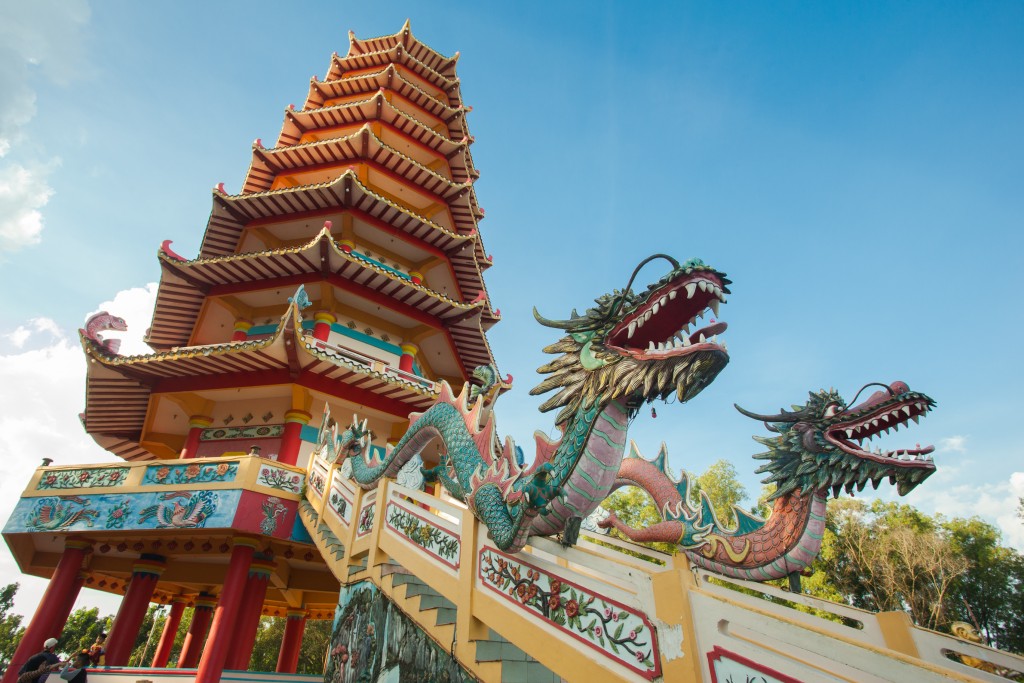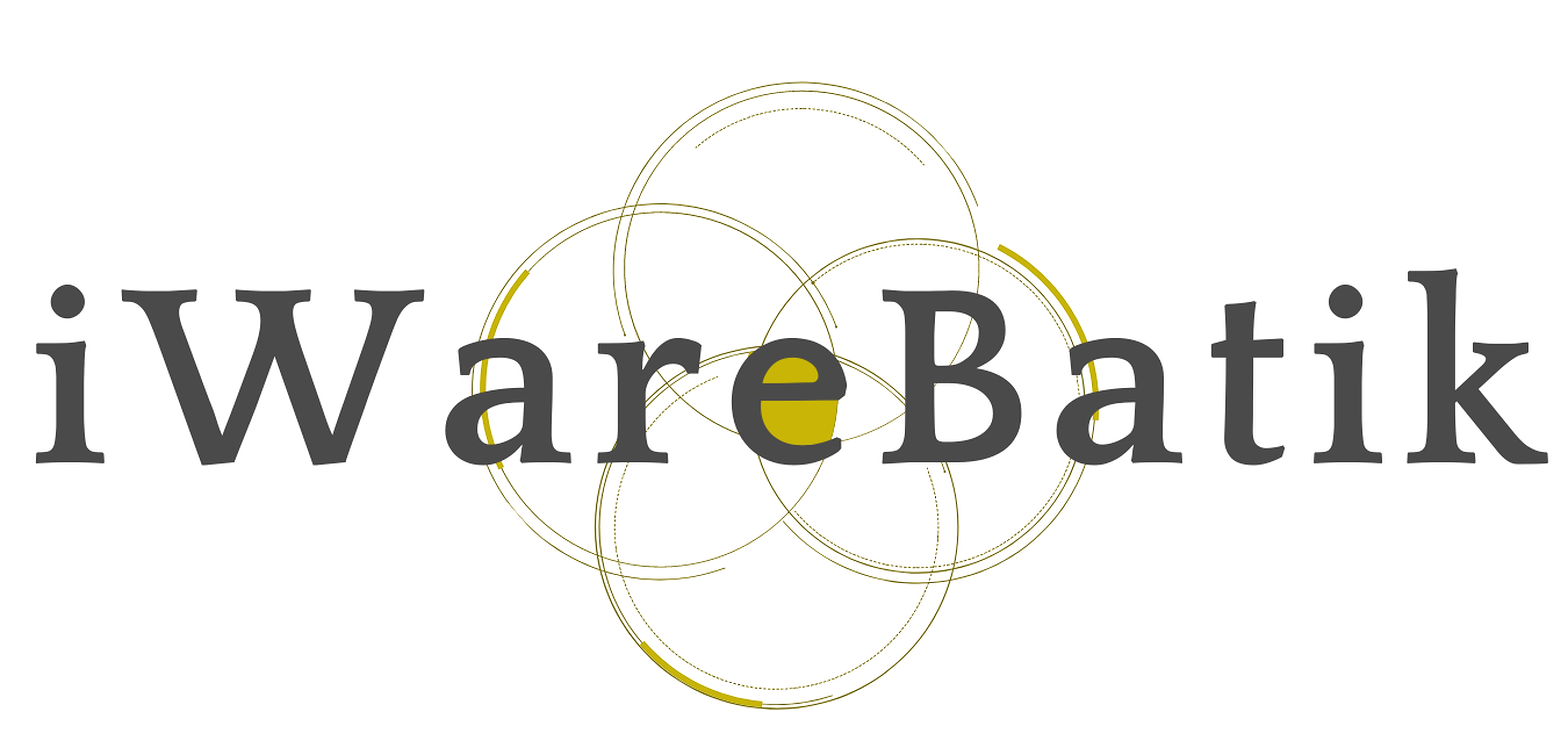Home / Batik Regions – Western Indonesia – Southern Sumatra – South Sumatra / Kemaro Buddhist Shrine
Cultural Destination
Embrace the spirit of the place!
Kemaro Buddhist Shrine

The Kemaro Buddhist Shrine (photo: Srivijaya)
Kemaro Buddhist Shrine
Kemaro Island is believed to be a sacred place for romantic couples. The island is known for its legendary love story, between Princess Siti Fatimah and a Chinese merchant, Tan Bun An, which happened during the kingdom of Palembang in the 17th Century. In addition, this place is regarded as a holy place for Buddhists, whereby the Chinese monastery (Hok Tjing Rio temple) is located. During the Chinese New Year, local communities and tourists celebrate the annual Cap Go Meh festival in this shrine. Let’s come and experience the encounter with the holy spirit of this place!
Tourist Attractions in South Sumatra
Historical Grand Mosque of Palembang
Grand Mosque of Palembang, founded in 1738, has a distinctive blend of three cultures,
Ampera Bridge
Ampera Bridge is a historic bridge which was built during 1962-1965 for
South Sumatra
Batik Motifs
Jupri Kembang Teh
Kembang Teh illustrates the tendrils of tea plants that grow in the highlands of
Jumputan Bintang
The word Jumputan means the tie-dye technique, while the word “Bintang” refers to
Bintik Tujuh
The Bintik Tujuh (Seven Dots) motif has 7 white spots and green color gradation as
Discover
Indonesian
Batik
Motifs
Kuda Kupang
Horses symbolize wealth. It contains noble values of virtuous characters that bring
Kaganga Tanah Rejang
If Batik Besurek combines Arabic calligraphy motifs, then the Kaganga batik takes
Karawo Pinang
Pinang refers to the Palm areca tree. This motif is considered as the original
Salakanagara
Salakanagara batik motif illustrates the first kingdom in the Betawi land
Wakatobi
It symbolizes the coastal beauty of the Wakatobi island and the symbol of Patra symbolizes
Gajah Way Kambas
The motif illustrates the Lampung’s natural reserve, the Way Kambas. it also symbolizes
Ake Patra
Ake is related to the divinity and the composition of the universe. It is a symbol of
Gentala Arasy
Built as high as 80 meters, the tower also highlights the historical side of
Sido Mulyo
Sidomulyo is one of the classical motifs, which is specifically used for the bride’s costume in
Singayaksa
The Singayaksa motif comes from the name of a place where Sultan Hasanuddin used to
Tabir Tanjung
Tanjung flower is a type of Cherry tree flower, which is commonly found in
Bultiya
The word ‘Bultiya’ is an acronym of the three major tribes in North Kalimantan, namely
Pucuk Rebung Riau
Pucuk Rebung symbolizes heart determination in achieving goals, good luck, and
Tongkonan
Toraja’s traditional house is called Tongkonan. Tongkonan is a place for
Daun Lada Hitam
The black pepper motif represents the main commodity of Bangka Belitung
Biji Kopi
The coffee seeds motif illustrates the pride of local coffee specialities in
Burung Bidadari
Bidadari birds are endemic birds in Halmahera. This motif represents an
Gorga Simeol-Meol
The Gorga Simeol-meol is a pattern of plant tendrils. it is regarded as a symbol of longevity and
Karawo Mahkuta
Mahkuta refers to Gorontalo’s traditional crown. It represents noble characters of
Kaharingan
The Kaharingan or ‘tree of life’ based on the Dayak tribes’ belief system. This tree symbolizes
La Galigo
La Galigo is a literary work of the Buginese Epic that has 300 thousand epic lines. It is considered even
Ikan tambal
The word “Ikan” refers to fish. The philosophical meaning of Ikan Tambal means is
Gurdo Solo
Gurdo or garuda bird is the mount of the Indian god Vishnu. As the Sun Bird,
Rangkiang
The word “Rangkiang” refers to the rice granary in the Minangkabau language. It symbolizes
Teguh Bersatu
This batik motif shows the strength of the people of Kupang. It also represents a sense of
Wirasat
Wirasat or divine inspiration is a gift from God. This inspiration is symbolized by
Dayak Kamang
Kamang motif is generally found in the Dayak tribe shield because it is believed to
Mahkota Siger
Siger is the crown of a noblewoman in ancient time. It is a symbol of femininity, strength, and
Bintik Tujuh
The Bintik Tujuh (Seven Dots) motif has 7 white spots and green color gradation as
Hiu Taliyasan
Indonesia is also home to the world’s largest fish, the whale shark (Rhincodon typus). Hiu Taliyasan refers to
Pala Salawaku
This motif illustrates the unique weapons of the Maluku region, namely
Paqbarre Allo
The word “Barre” means round and “Allo” means the sunlight. This motif is interpreted as
Tubo Kelapa
Coconut tree is a symbol of a good character and strong mentality. It illustrates the more success a person, the more
Tenun Bima
The motifs are adopted from Bima woven textile. This pattern has received a great
Rumah Mamuju
the Batik motif illustrates the house of Mamuju King with the stairs, located on the left of the wooden stage house
Tanah Liek
The word “Tanah Liek” refers to clay in Minang language. It is also known as
Daun Simpor
This motif is inspired by the Simpor plant (Dillenia Suffruticosa) which is a typical
Tampuk Manggis Sasirangan
The motif illustrates the philosophy of the mangosteen fruit, which is
Durian Pecah
Broken Durian motifs depict the foundation of faith. The second half signifies the mastery of
Sekar Jati
Sekar means flower and Jati refers to teak trees that symbolizes a strong mental character that
Daun Sirih
This motif illustrates betel leaves that are used by Lombok communities as traditional
Besurek Rafflesia
The term “Basurek” refers to a textile that contains letters or inscriptions
Kerawang Tegak Aceh
The Vertical Upright (Kerawang Tegak) Motif symbolizes a person who has a strong
Tifa Totobuang
The batik motifs illustrate Maluku’s traditional music instrument called
Prada Papua
The word “Prada” in the Javanese-Indonesian dialect means a batik textile that
Parang Rusak
Another meaning behind this motif is an unconquerable spirit, symbolized by
Tangerang Herang
Tangerang Herang motif is a symbol of Tangerang city. The Tangerang Herang batik motif consists of
Taiganja
Taiganja is a precious gold pendant that shows the social status of the Kaili family. It is
Buketan Bali
The Balinese bouquet (Buketan Bali) is a floral arrangement and the name is
Bekantan Pakis
This motif represents Pakis Haji (Polystichum setiferum), an endemic plant in
Jupri Kembang Teh
Kembang Teh illustrates the tendrils of tea plants that grow in the highlands of
Jumputan Bintang
The word Jumputan means the tie-dye technique, while the word “Bintang” refers to
Dayak Taghol
Dayak Taghol has a distinctive style of four curved lines and small dots. This motif represents
Cengkeh
The clove flower motif is the main commodity of the Tolitoli Regency. This motif represents
Awan Berarak
Awan Berarak is a combination of Dayak motifs and Malay patterns. The word ‘Awan Berarak’ means the
Sekomandi
Its philosophical meaning is the eternal union which refers to a saying “until death do us part”
Pati-Pati Pinehiku
It symbolizes the hierarchy in society and the social status of the Mekongga
Manguni Minahasa
Manguni is identified as the symbol of the Minahasa people. Manguni is known as a
Insang Ikan
Insang refers to the gills of the fish. This is a typical pattern of Malay ethnic who inhabits
Tikar Natuna
The Tikar Natuna motif is adapted from the traditional making of pandanus mats in
Pinawetengan
The Pinawetengan Batik pattern was taken from a prehistoric inscription in
Sero Tangga
The Sero Tangga illustrates an endearing feeling and sacrifices of a person to fulfil
Merak Ngeram
The hatching peacock motif has a very deep meaning which refers to the sacrifice and
Angsa Duo
According to legend, the Angso duo batik motif is a pair of swans that are believed to have led Princess
Gonggong Beruntun
This motif illustrates that a person should maintain a positive attitude and
Pattimura
Pattimura is the name of an Indonesian hero who fought against colonialism in
Ukir Sentani
The Ukir motif is a batik motif that is inspired by various traditional Sentani wood carvings
Desa Na Tolu
The Desa Na Tolu characteristic pattern symbolizes the Batak philosophy of existence and
Honai
The Honai is inspired by the traditional house of the Papuan community living in
Besurek Rembulan
This batik illustrates praise for God who created the wonderful universe
Leuit Sijimat
This motif reflects the daily activities of the Baduy tribe in Banten. The main ornaments of batik motif consist of:


